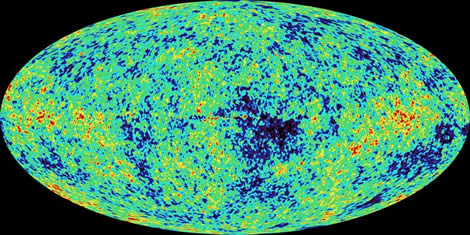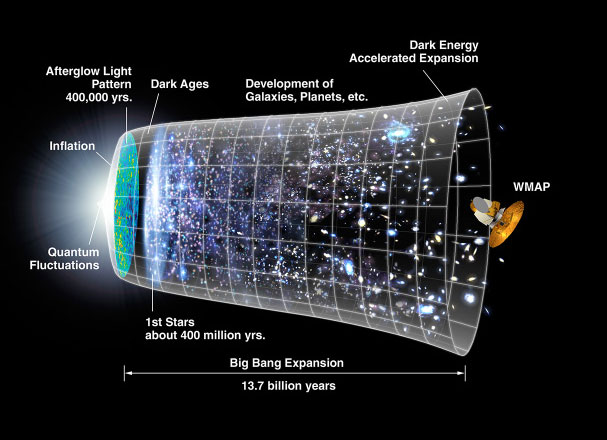One of the biggest questions in astronomy and science is how did the Universe begin? Although there is no definitive answer there is one theory that is widely accepted: The Big Bang Theory.
The theory states that at about 13.7 billion years ago, the Universe was a very dense, very hot tiny ball. Then it expanded. In a fraction of a second, the Universe grew in size a hundred trillion quintillion quintillion times bigger: from a size of an atom to bigger than a galaxy.
The immediate energy created matter and antimatter pairs. These annihilated each other immediately. The four fundamental forces that rule our Universe (Electromagnetic force, weak force, strong force and gravity)we combined in one "superforce".
When the weak force and the electromagnetic force separated from the superforce, the particles and anti-particles had enough energy needed to separate. These became the fundamental building blocks to our Universe.
As the Universe began to cool, subatomic particles were able to form from the energy. They were able to join together to form the very first protons and neutrons. Initially, there were equal numbers of protons and neutrons. But then the neutrons began to break down to form more protons whilst at the same time, other neutrons combined with protons to form the first nuclei of atoms. At the end of the first 3 minutes, there were no more free neutrons.
For about 250,000 years, the Universe was foggy. Light couldn't travel far without hitting something. As the universe continued to expand the fog lifted and and the background radiation that formed at the Big Bang was able to travel. The Universe became transparent. This same background radiation exists today and is one of the main pieces of evidence that supports the Big Bang theory.
300,000 years after the Big Bang when the temperature dropped to 3000°C, electrons slowed down enough to be captured by nuclei to form the very first atoms.



